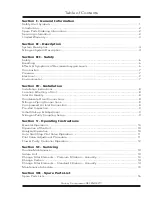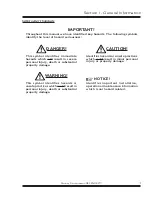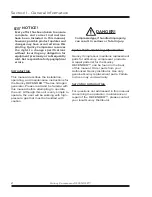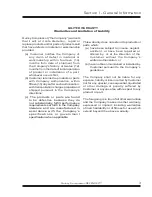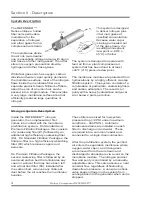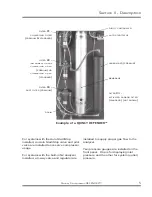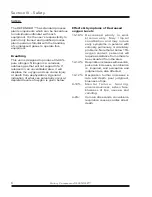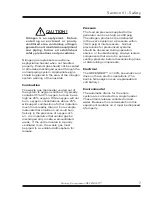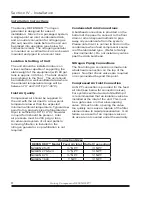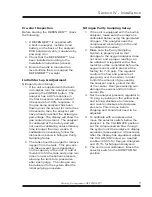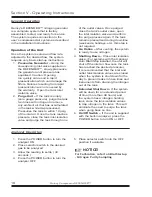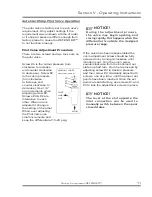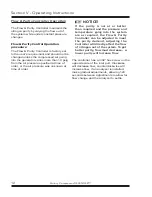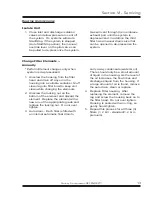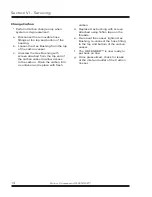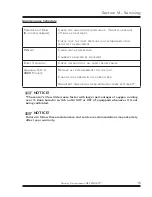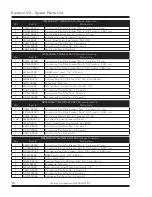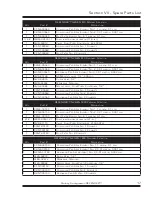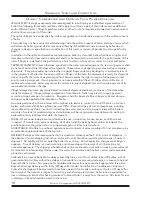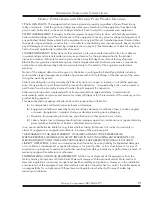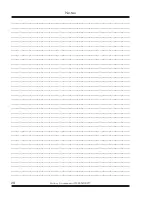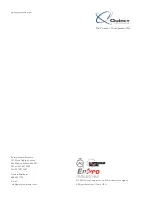
Section IV - Installation
Installation Instructions
The Quincy DEFENDER™ nitrogen
generator is designed for ease of
installation. Since it is a packaged system,
a single-point air inlet, condensate drain,
and an outlet connection for nitrogen gas
(N2 out) need to made before the unit can
be placed into operation (see below for
connection sizes). The nitrogen generator
is mounted on a vertical tank or can be wall
mounted and piped to a receiver tank.
Location & Setting of Unit
The unit should be installed indoors on
a level surface capable of supporting the
static weight of the equipment (with 80 gal.
tank is approx. 305 lbs.). The tank should
be anchored to the floor. The unit should
be installed in a well-ventilated area where
the ambient temperature range will be
between 70° and 104°F (21°-40°C).
Inlet Air Quality
Compressed air should be supplied to
the unit with the air dried to a dew point
temperature lower than the expected
minimum ambient temperature. Typical dew
point from a properly sized refrigerated air
dryer is sufficient (+40°F / 4°C). No water
in liquid form should be present. Inlet
air pressure must be 200 psig or less.
An advanced system of oil and particle
removing filtration is included in the
nitrogen generator, so pre-filtration is not
required.
Condensate Drain Connections
A bulkhead connection is provided on the
bottom of the panel to connect to the floor
drain or other disposal methods to pipe
away oily condensate from the system.
Please note that it is normal to find oil in the
condensate when feed compressor source
is of the lubricated type. (Refer to Safety
- Environmental.) Do not install any valves
past the drain bulkhead.
Nitrogen Piping Connections
The final nitrogen connection is made into
a bulkhead connection on the top of the
panel. No other check valves are required
or recommended beyond this point.
Compressed Air Inlet Connection
An NPT connection is provided for the feed
air inlet (see below for connection sizes).
For systems without an Auto Start/Stop it
is recommended that an isolation valve be
installed at the inlet of the unit. This must
be a gate valve or other slow-opening
valve. On such units, opening the valve
too quickly can cause a rupture of the filter
elements due to rapid pressurization. Unit
failure as a result of an improper valve or
its use are not covered under the warranty.
Connection Sizes
DEFENDER™ Model Feed Air Inlet Outlet Connection
N2GEN 25-70
¼” NPT
¼” NPT
N2GEN 270-520
½“ NPT
¼” NPT
N2GEN 870
½“ NPT
½“ NPT
N2GEN 1800
1“ NPT
½“ NPT
8
Quincy Compressor-DEFENDER™



